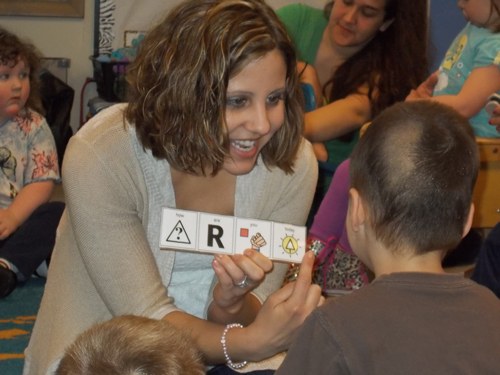While all children develop and grow at their own unique rate, some may experience developmental delays and need extra help and support. An awareness of early intervention (EI) is valuable for adults caring for children.

Early intervention (EI) is a network of services and supports put in place for an individual child with an identified developmental delay (DD)/special need or who may be considered "at-risk" for developing a delay. Available services within EI extend to children from birth through their preschool years. This makes it possible to seek out support for even the youngest child, and in instances when it would be necessary, to have these additional supports throughout a child's preschool experience. The sooner developmental delays and special needs are identified, the sooner children can begin receiving appropriate and consistent services to help them grow and thrive.
There are two primary categories of risk factors that may contribute to an individual's need for EI services. Due to genetic factors, or complications during pregnancy or at birth, some children may be identified at birth as having a development delay/special need. Other children, however, will be identified at a later point, perhaps as their family, doctor or caregiver recognizes that the child seems to be struggling to reach certain developmental milestones. These risk factors could be considered environmental.
It is important to look at the whole child whenever there are concerns related to potential delays. Typically there are five primary areas of development that are monitored by early education providers and used to determine eligibility for EI services:
- Cognitive - problem solving, critical thinking, sorting
- Social-emotional - expressing emotions, interacting with others
- Physical - crawling, walking, grasping, drawing
- Communication - speaking, listening, understanding
- Self-help/adaptive - dressing, toileting, eating
To early education providers, these areas may be familiar, as they are the areas that state standards and most progress reporting tools target. When concerns exist regarding the typical continuum of development of a child, it is important that this information be shared with parents/guardians before any additional action is taken. Only with parent/guardian permission can additional measures be taken to determine if EI services would be appropriate. Many states require an initial screening to determine if there is reason to proceed to a formal evaluation. Formal evaluation looks for strengths and areas of need within the five areas of development.
The intention of early intervention is to reduce the effects of the disability or delay and to promote the individual strengths and abilities of each child. What does this mean in practice and what does this mean for the early education provider? Breaking down the concepts of early intervention into two parts, early and intervention, is an effective way to reflect on how the intervention piece fits and what early education providers can do, or may already be doing, to support EI in their programs.
Early
Early childhood professionals typically have completed professional development or training on developmental milestones in early childhood development and are utilizing their state early learning standards as a guide in their teaching practices. This knowledge in early childhood development is important for many reasons including the ability to note where children are excelling or struggling along a development continuum. A child's early teacher is an important member of the EI team as it works with families to access additional resources and supports, as needed. The earlier intervention is received the greater the likelihood of long term benefits and outcomes for an individual's life.
Intervene
To intervene, or to become involved, is the root of intervention. Every day early educators learn new ways to intervene and become involved when there are familiar and expected challenges. For example, perhaps a group of toddlers are struggling to share or a professional is working with a pre-K group of children who are busy asserting their independence and are ready for new challenges. While these situations are not considered unique, special or related to a development delay, they are challenges for which the professional has probably sought out support, read materials, attended a training, or collaborated with a peer in order to "intervene" and meet individual and group needs.
NOTE:
EI services must meet the standards the state has determined as well as the requirements set forth in the Individuals with Disabilities Education Act, Part C, regulations. State specific information is available.
In Pennsylvania, visit the Pennsylvania Department of Education.
Outside of Pennsylvania, visit the Early Childhood Technical Assistance Center.
The same concept applies to the intervention provided when a child has a diagnosed delay. It will have a different look, and it will mean calling on the support of "experts," including the child's family/guardians. The early education provider is an integral part of this early intervention team and support network.
It is increasingly important for early educators to be empowered with the knowledge of what EI supports and services exist. The EI system is in place not only to provide specific support to the child and family, but to also ensure that this child is able to participate in community activities and experiences, including early education. Engagement in, and awareness of, early intervention not only informs best practice, it is a great way to be involved in hands-on professional development and to gain new ideas to implement in the early education classroom.

